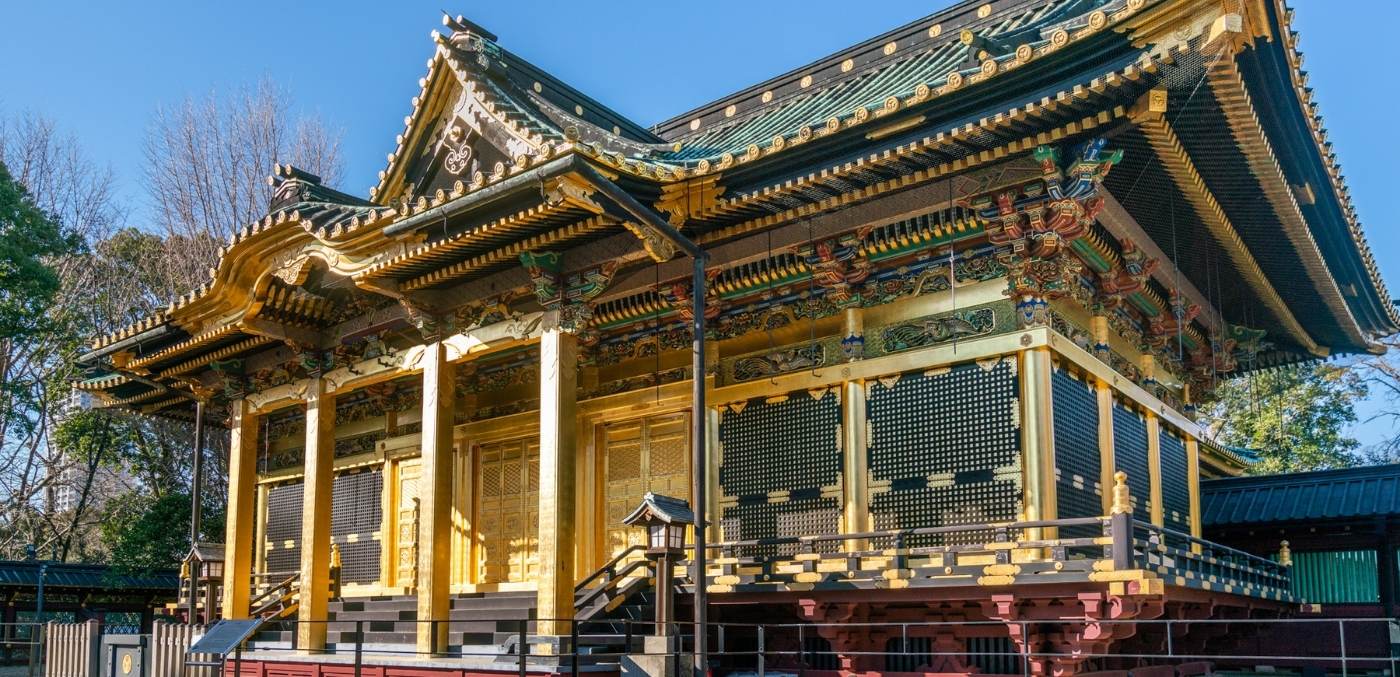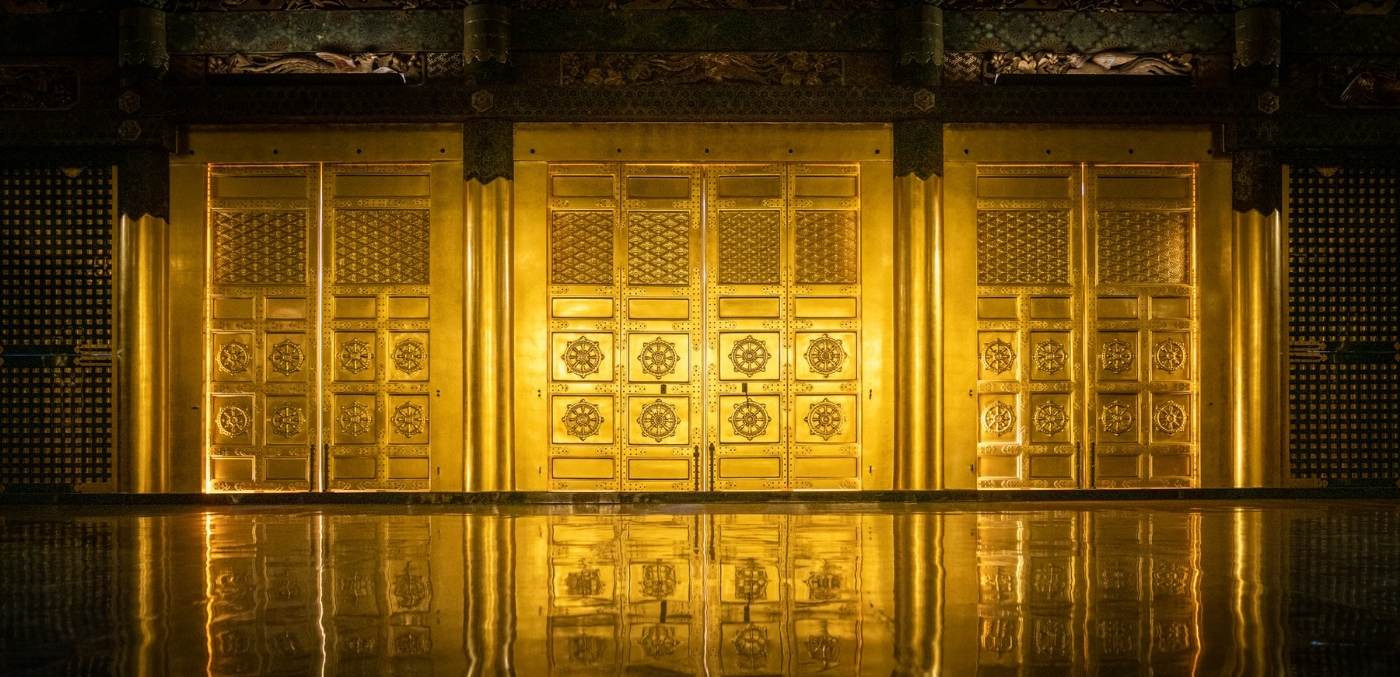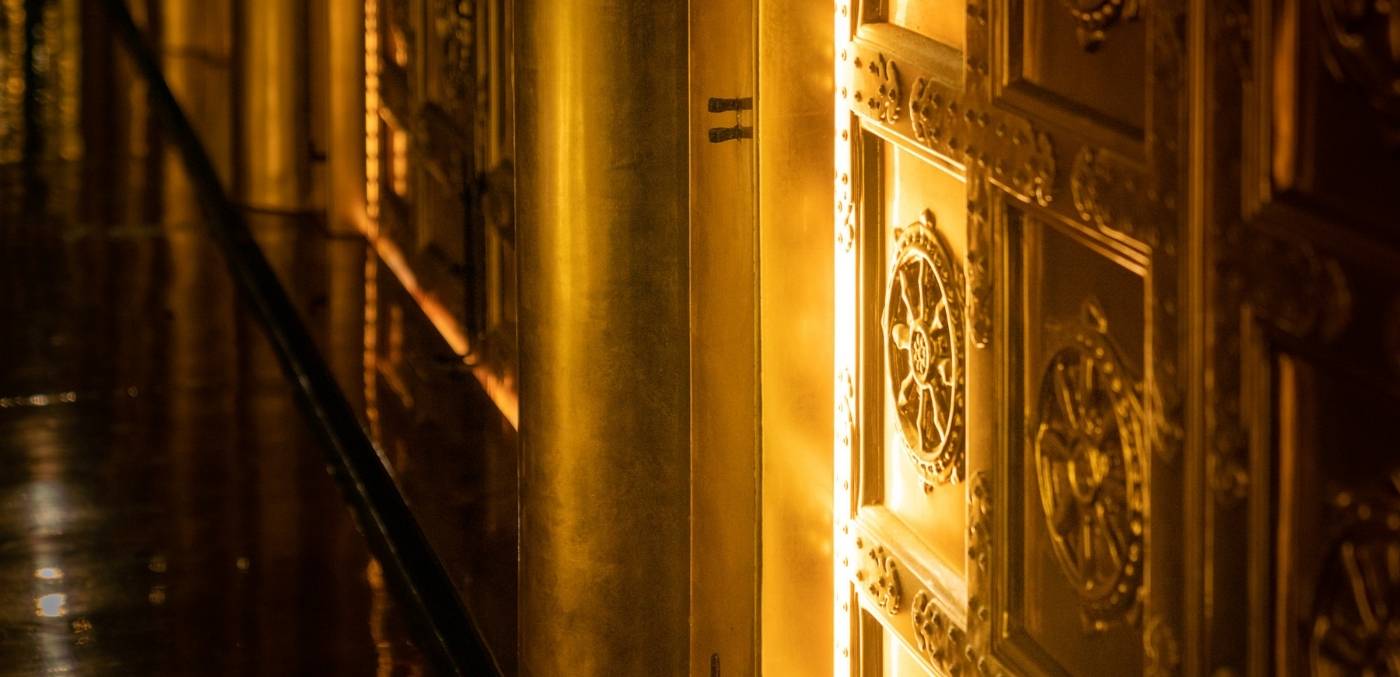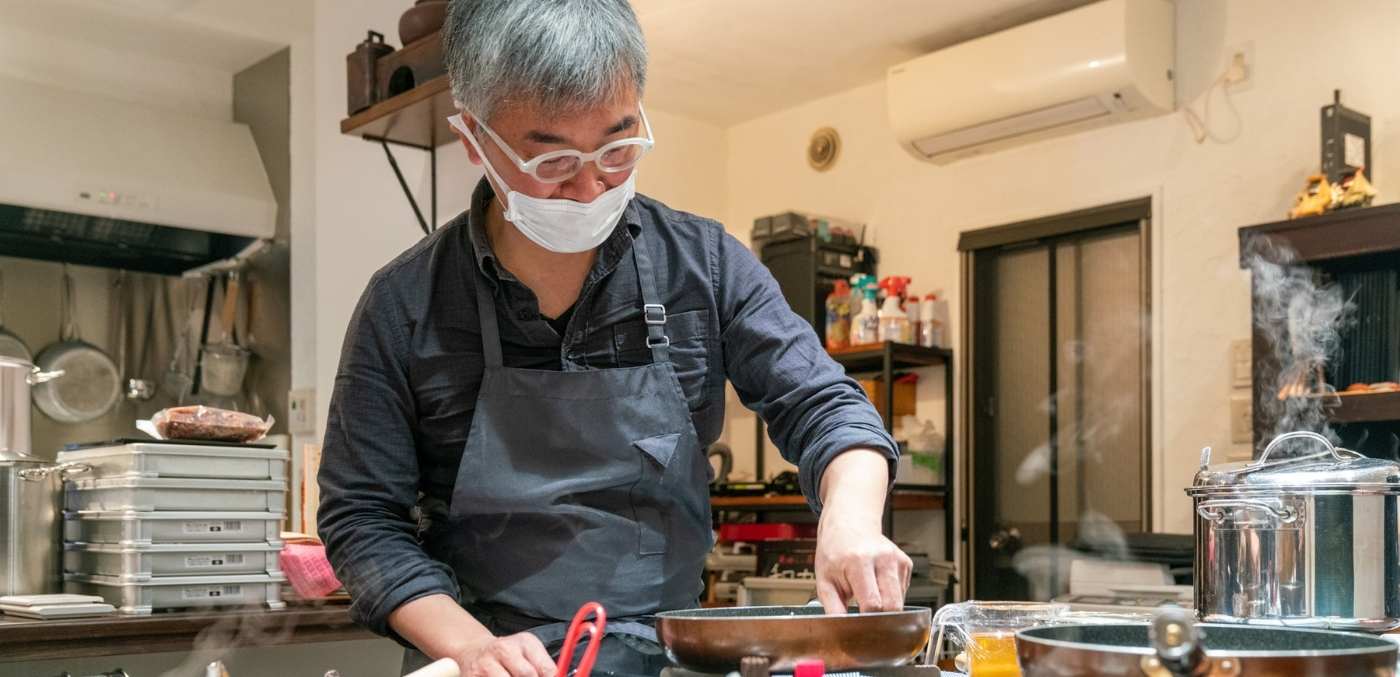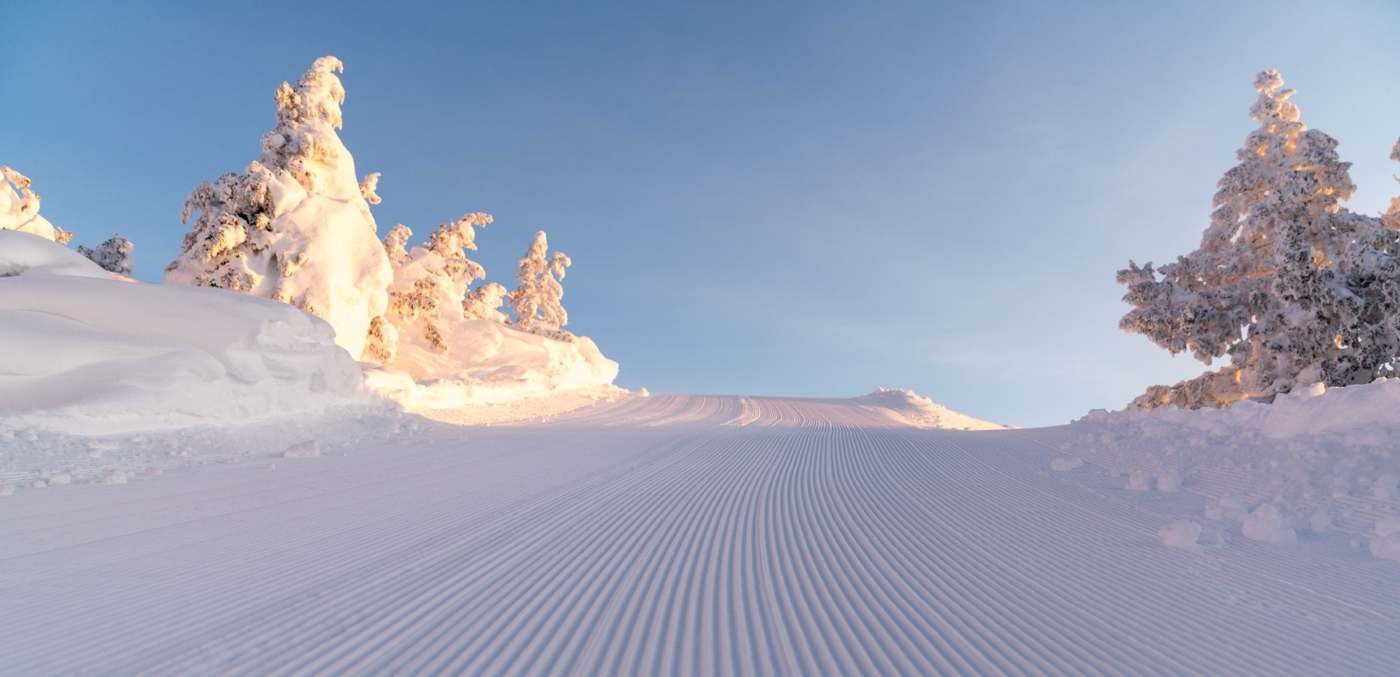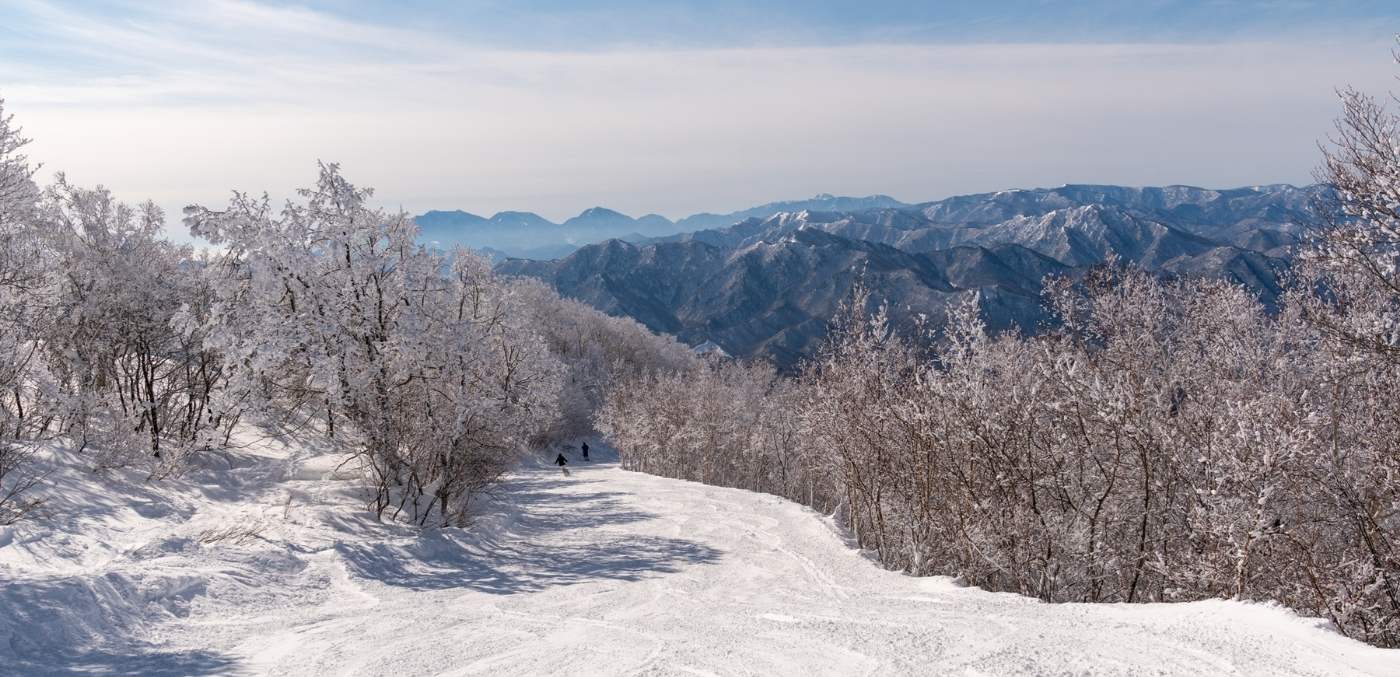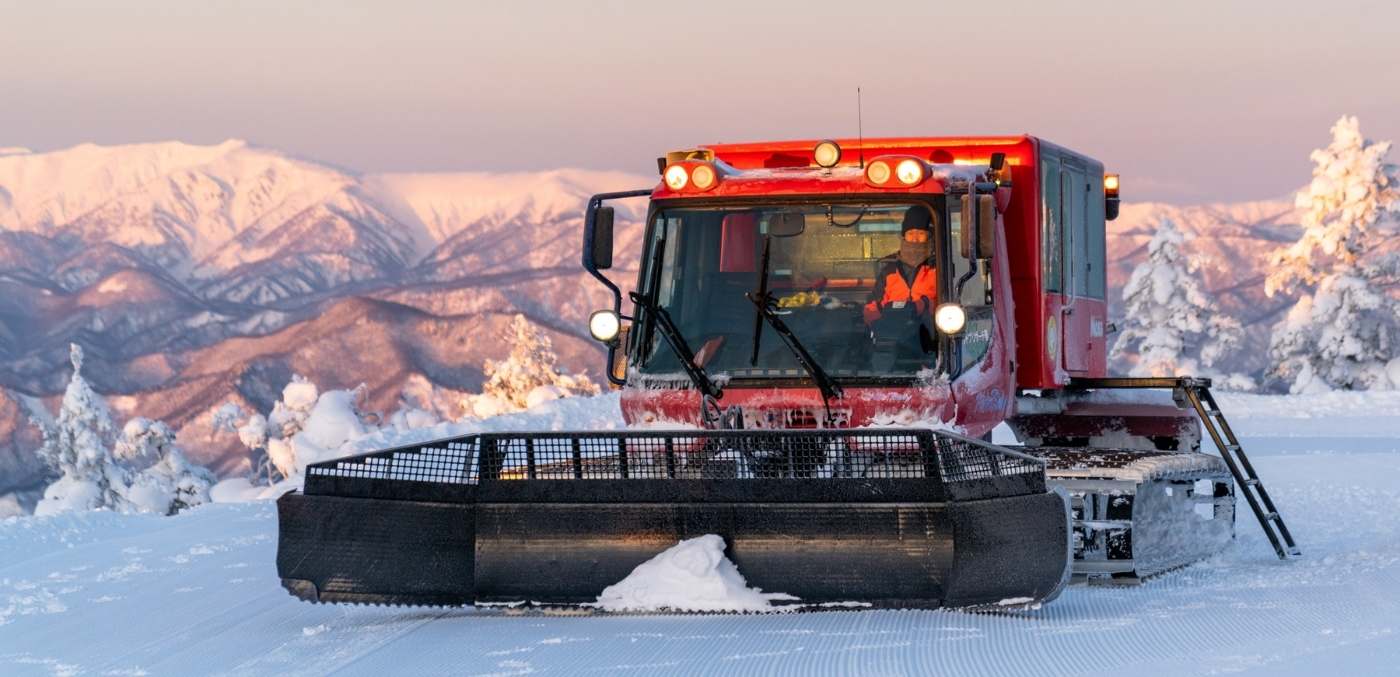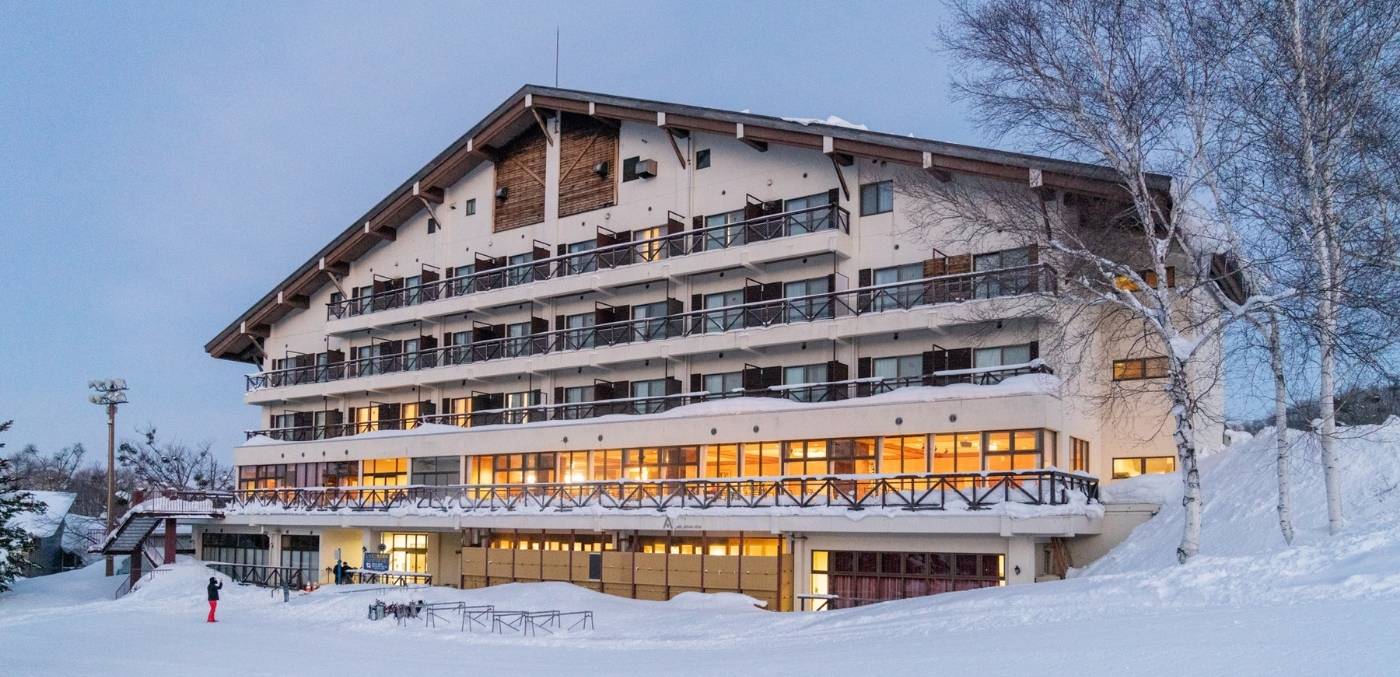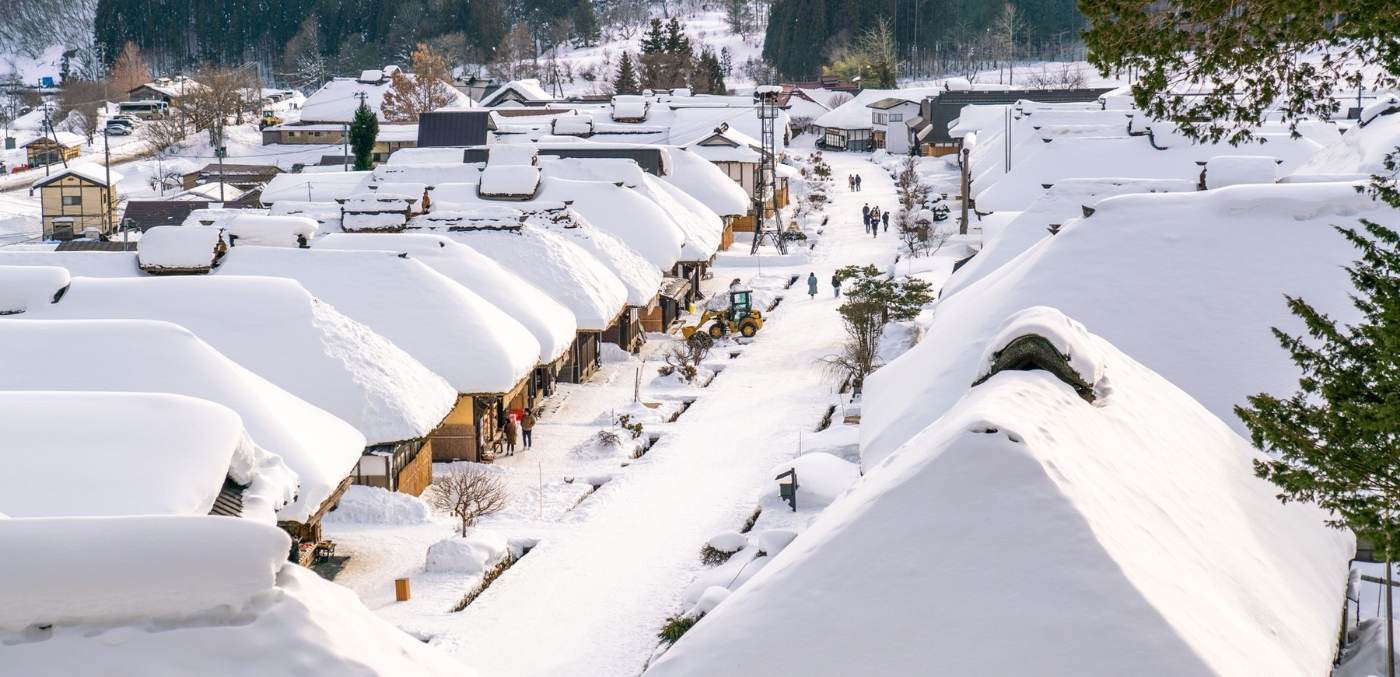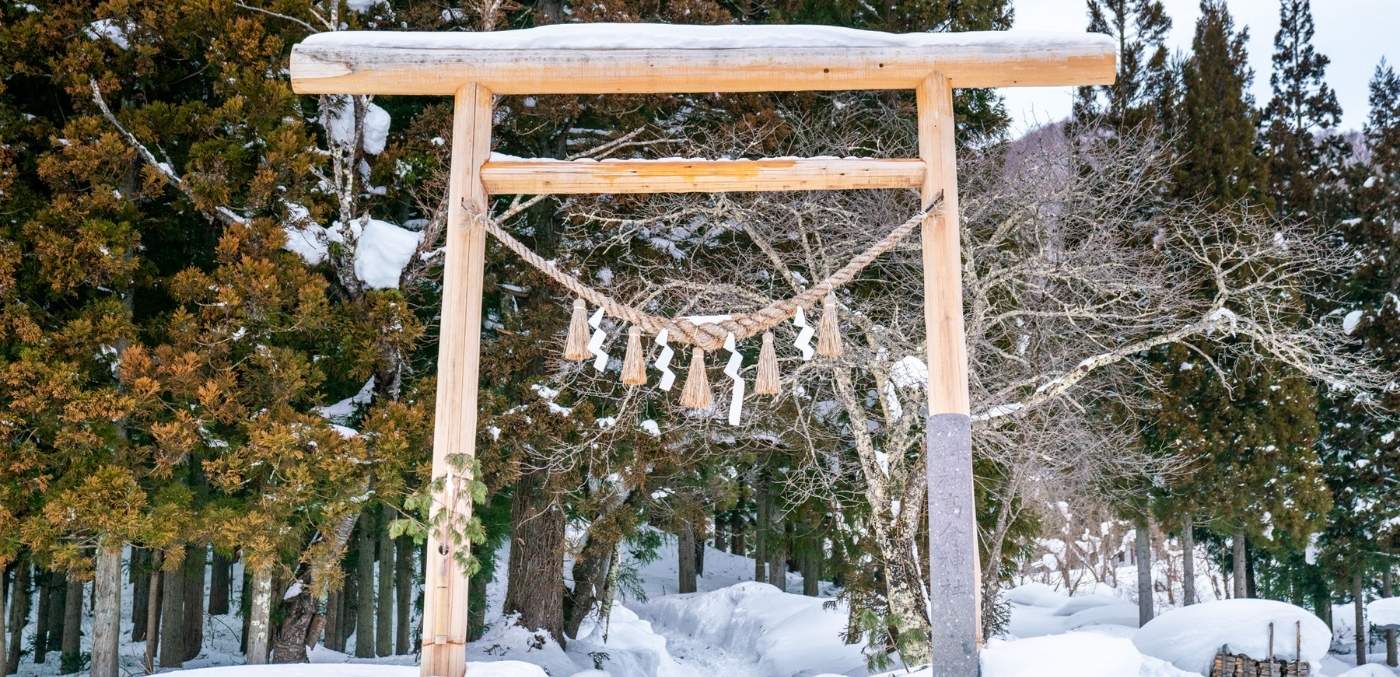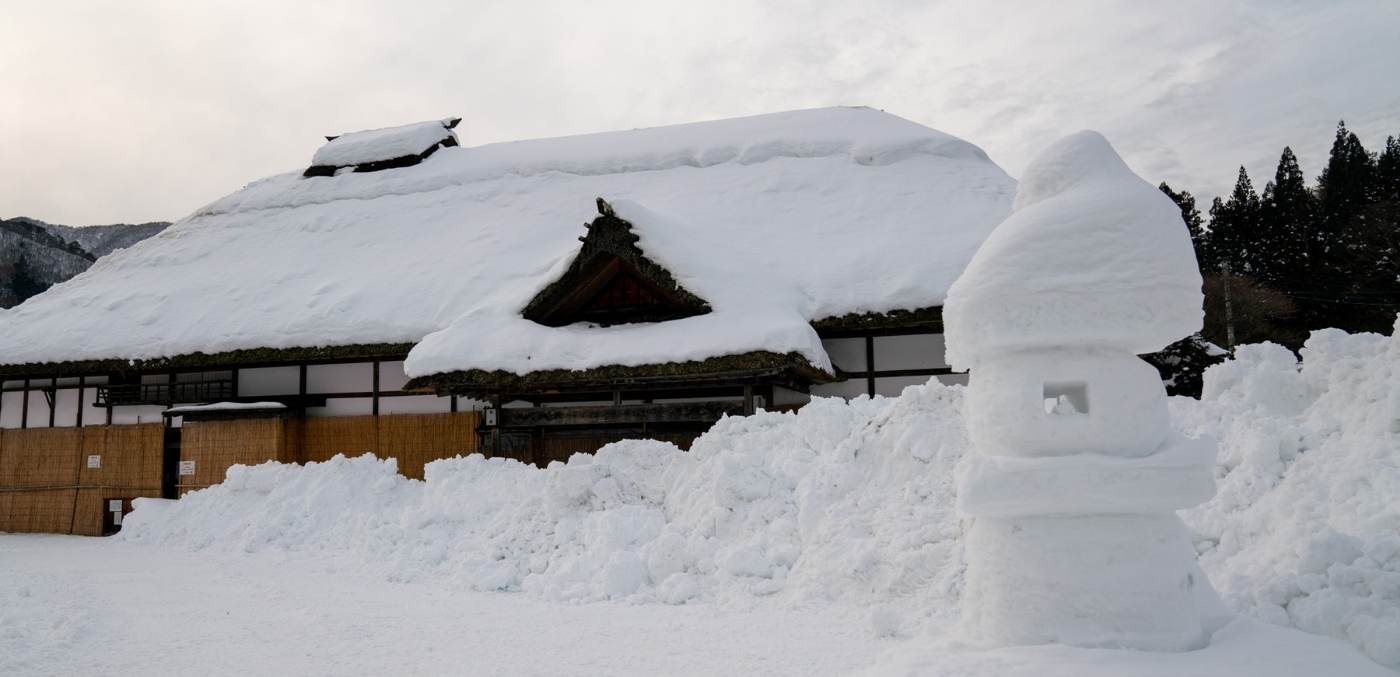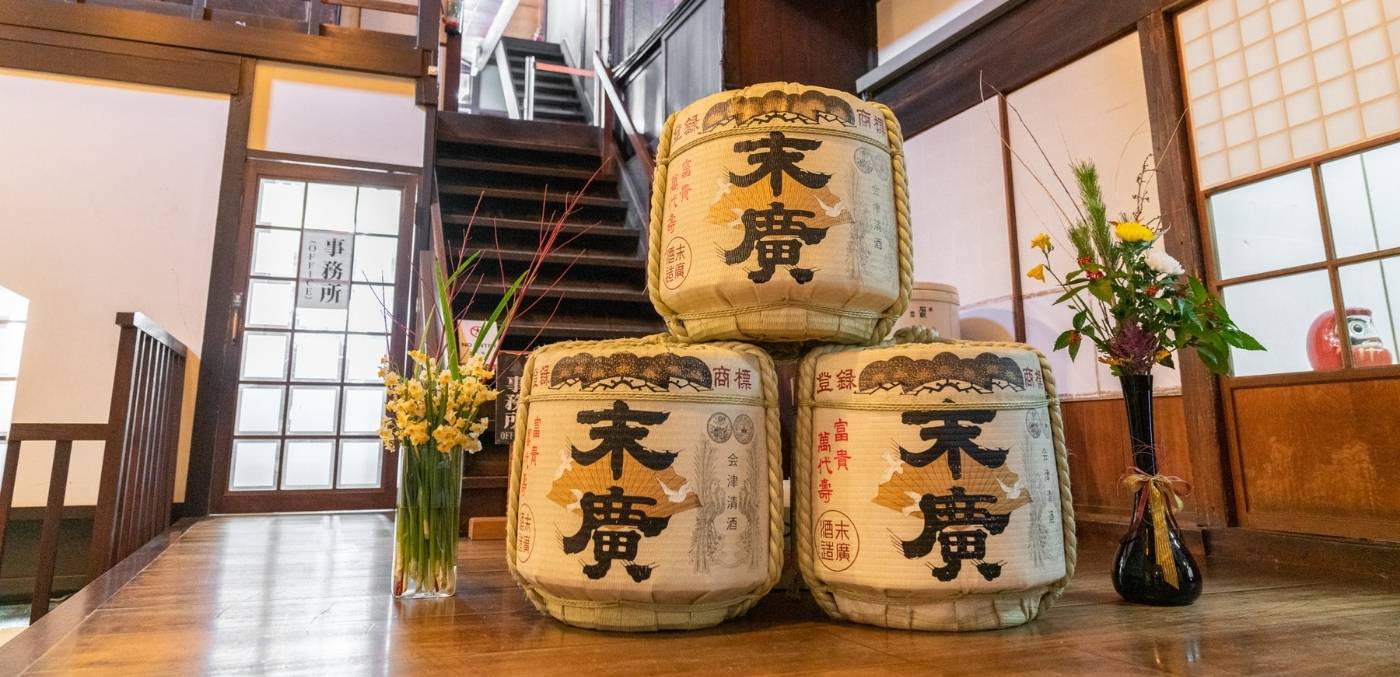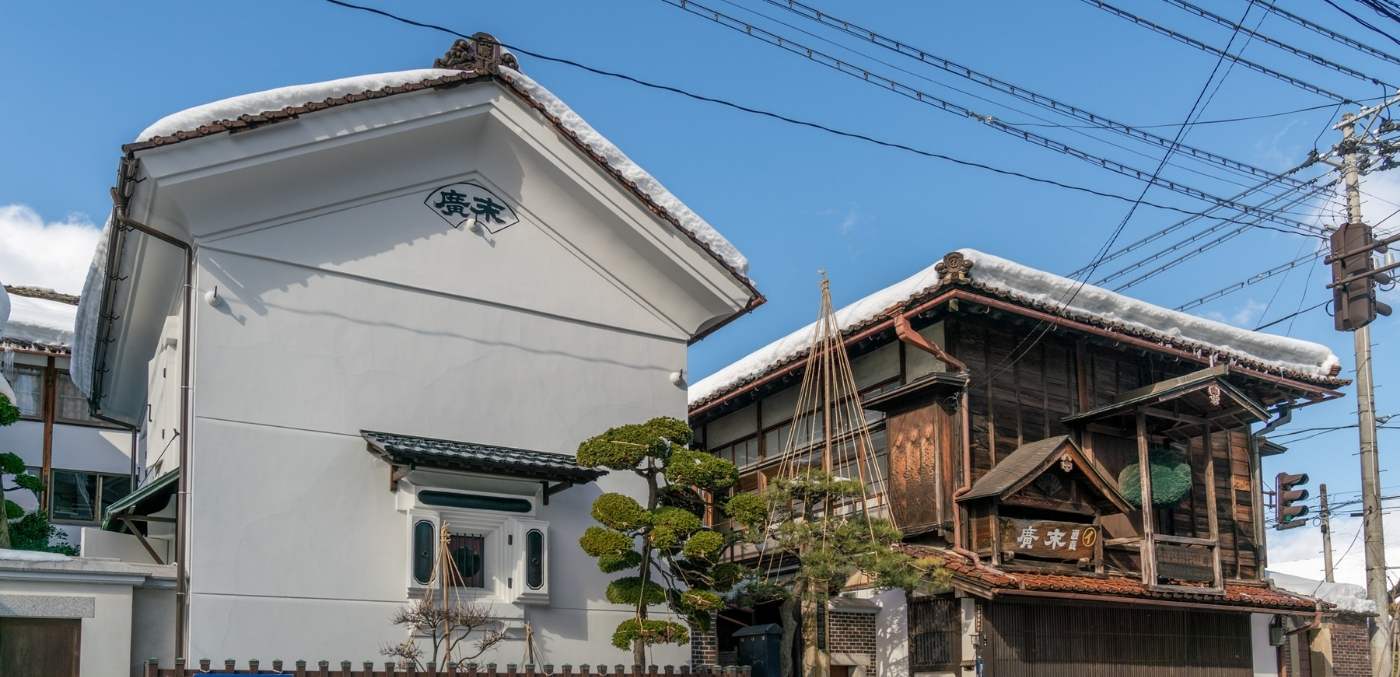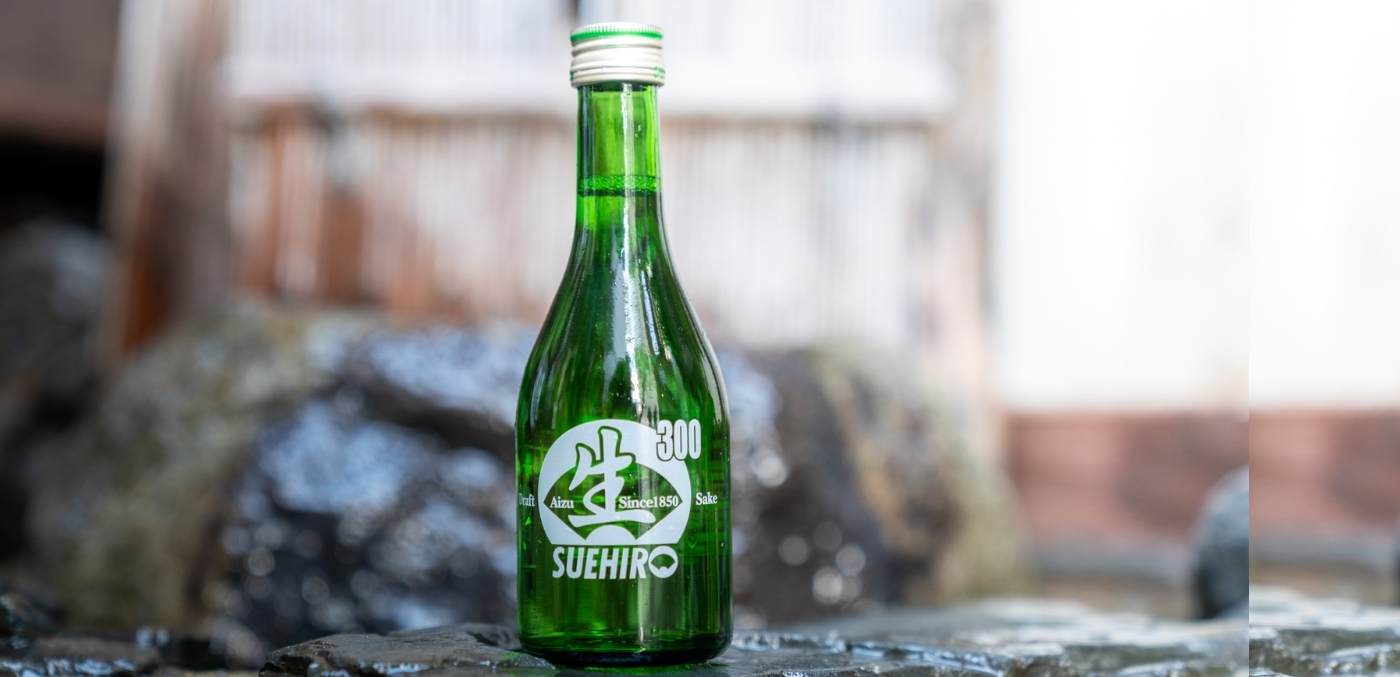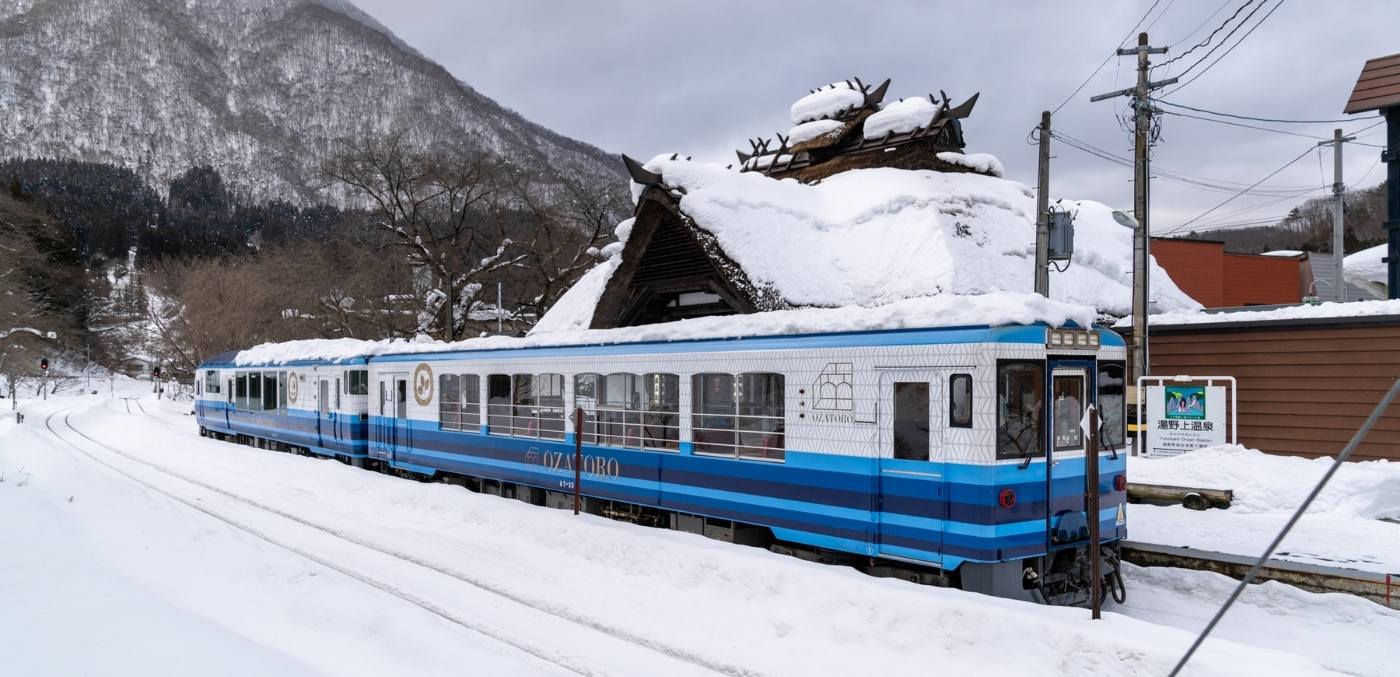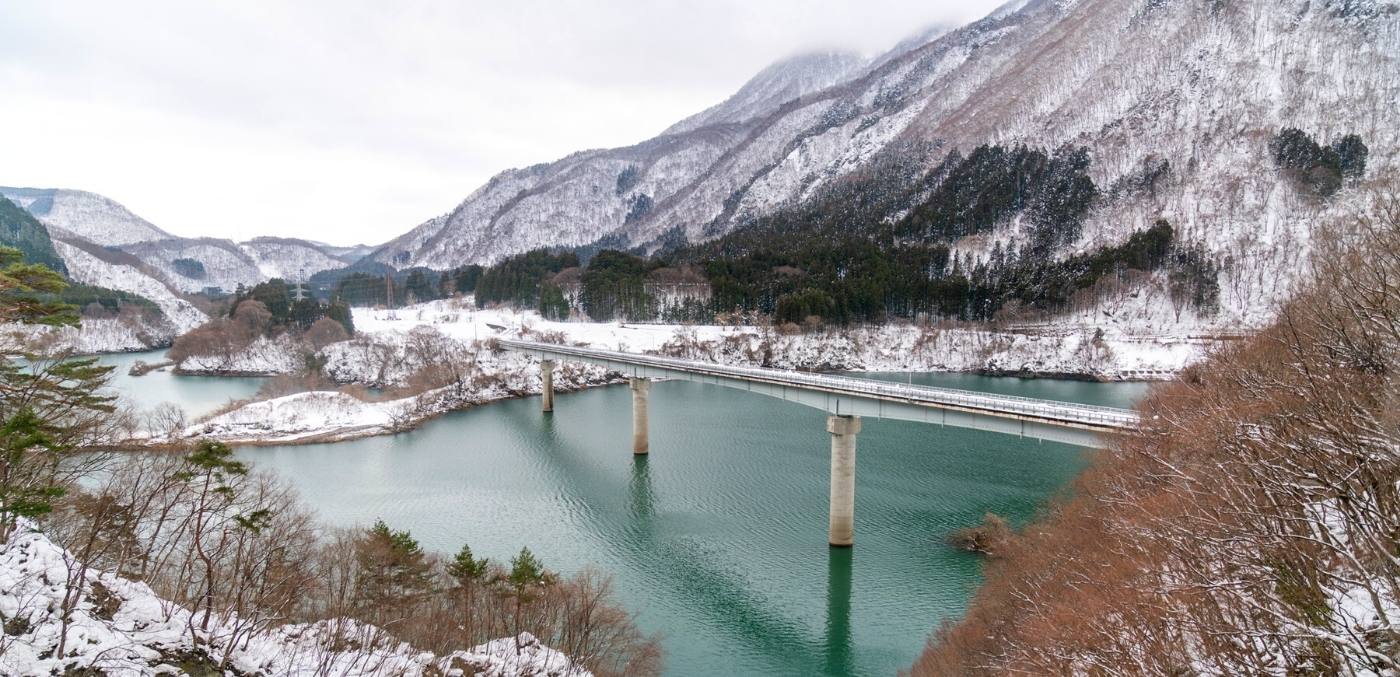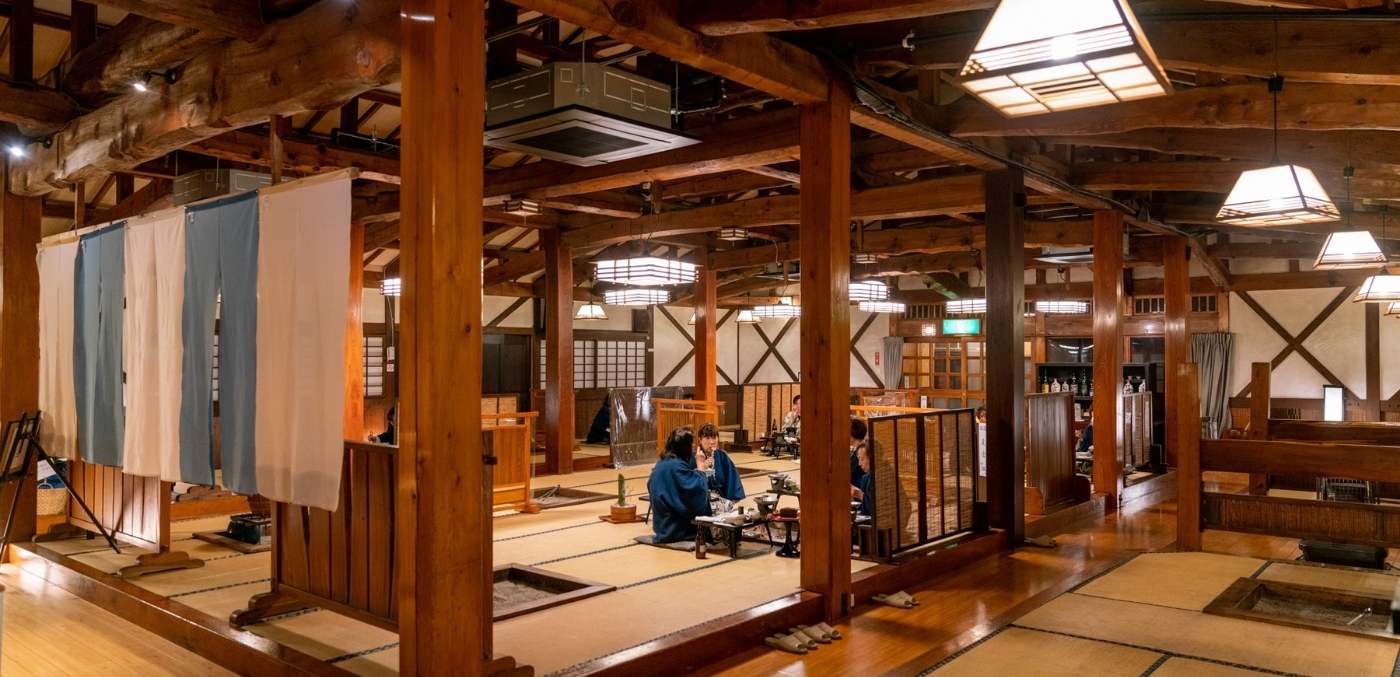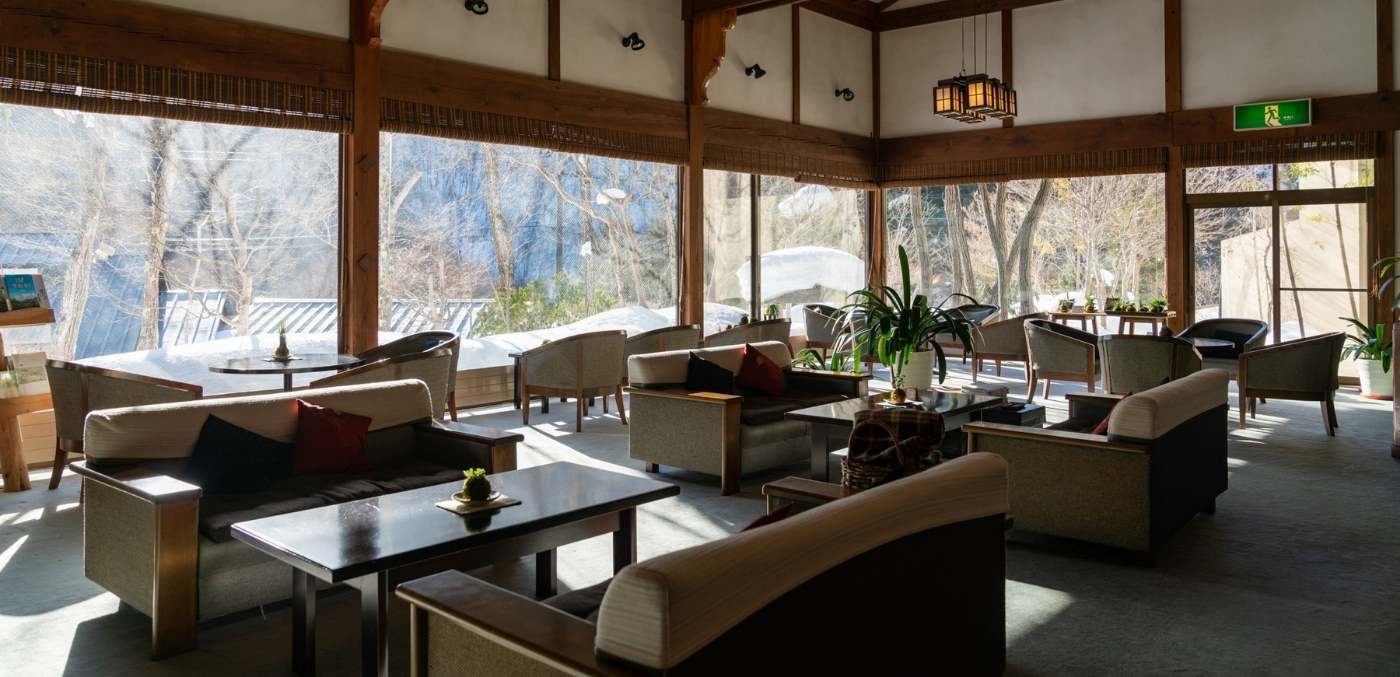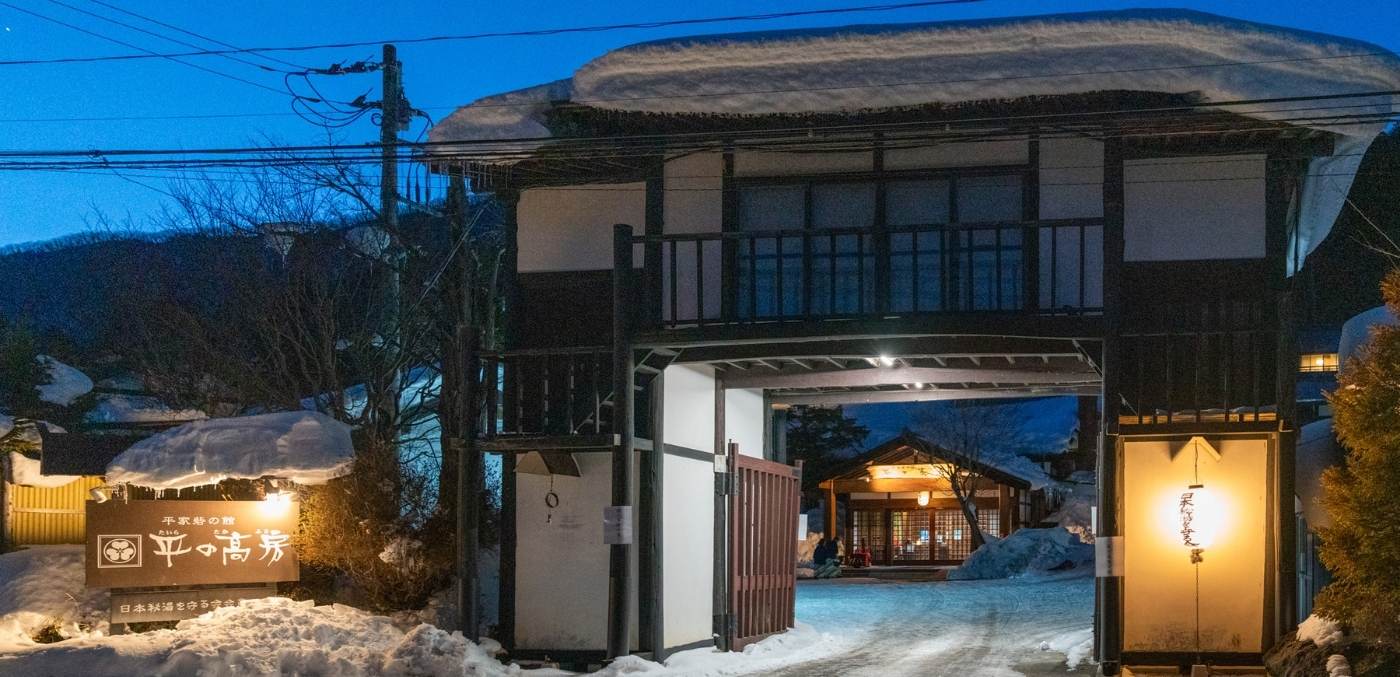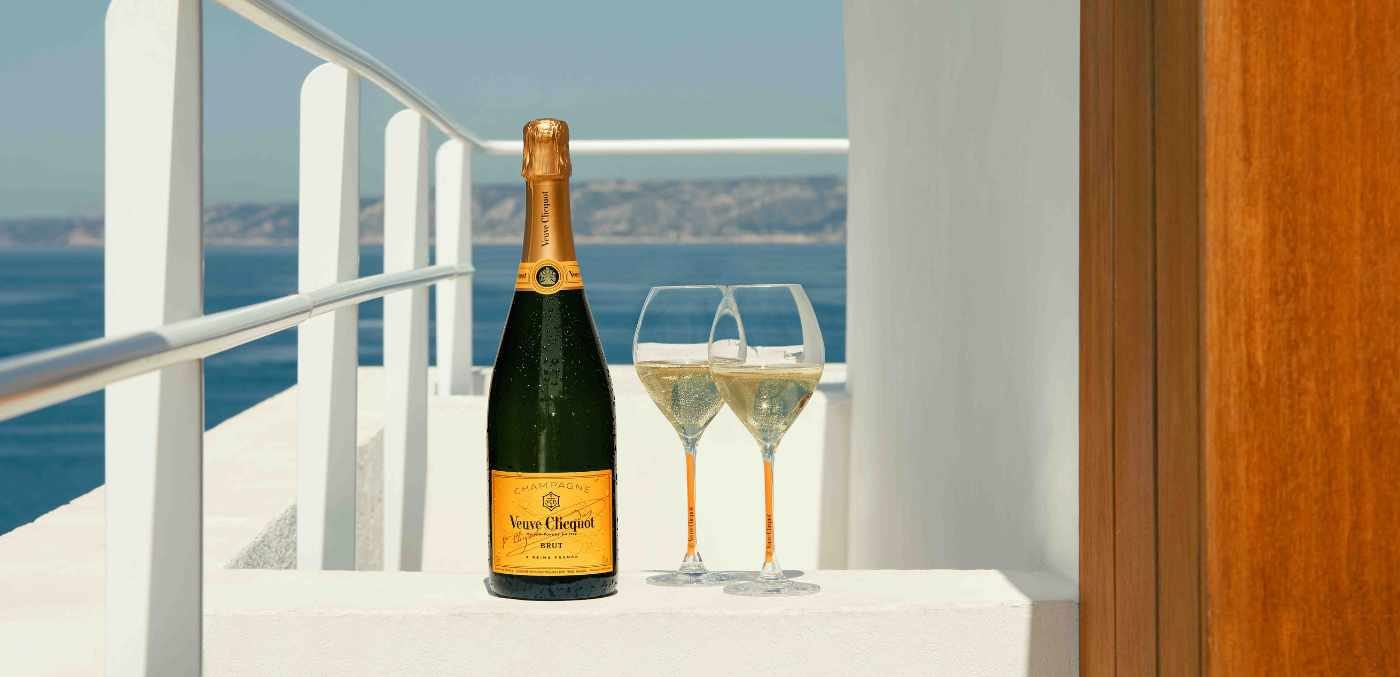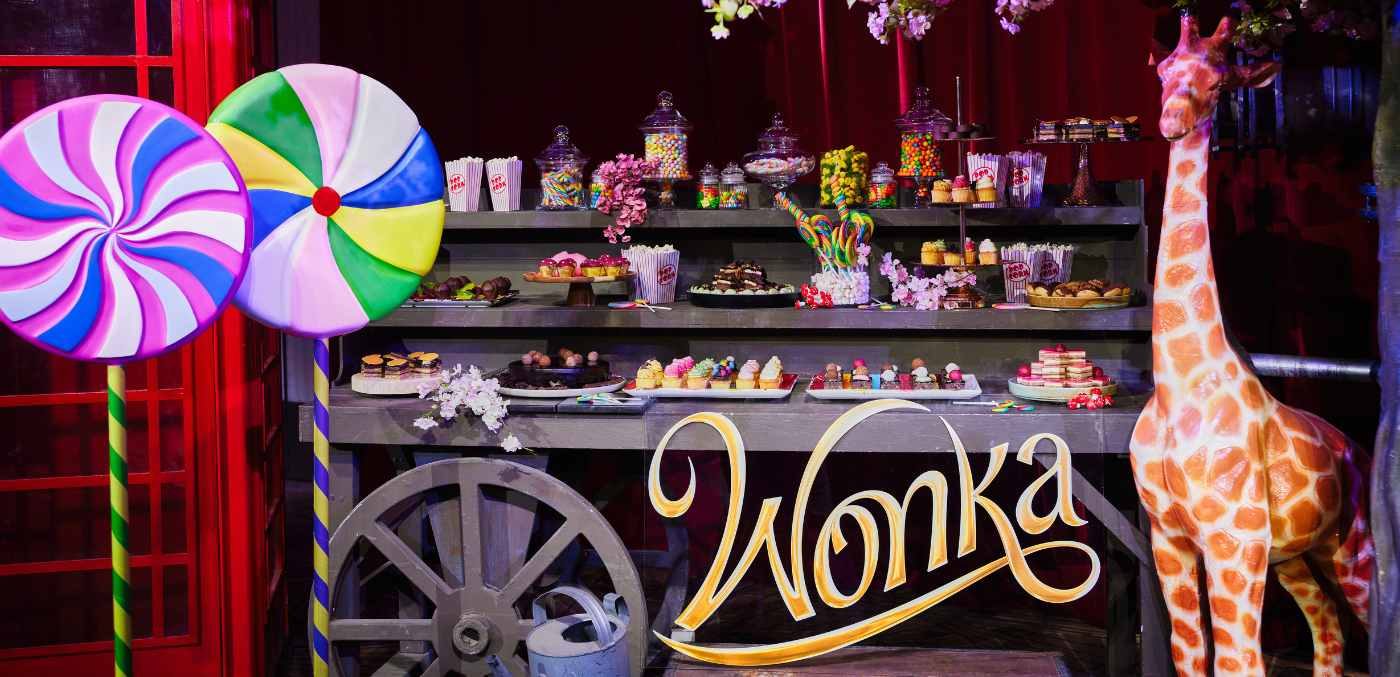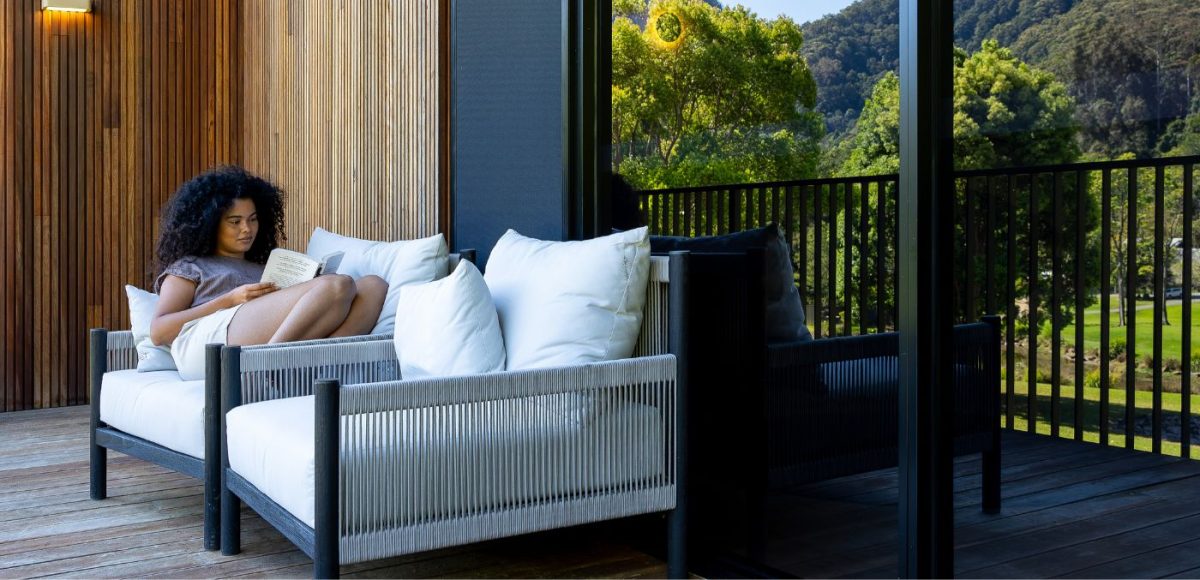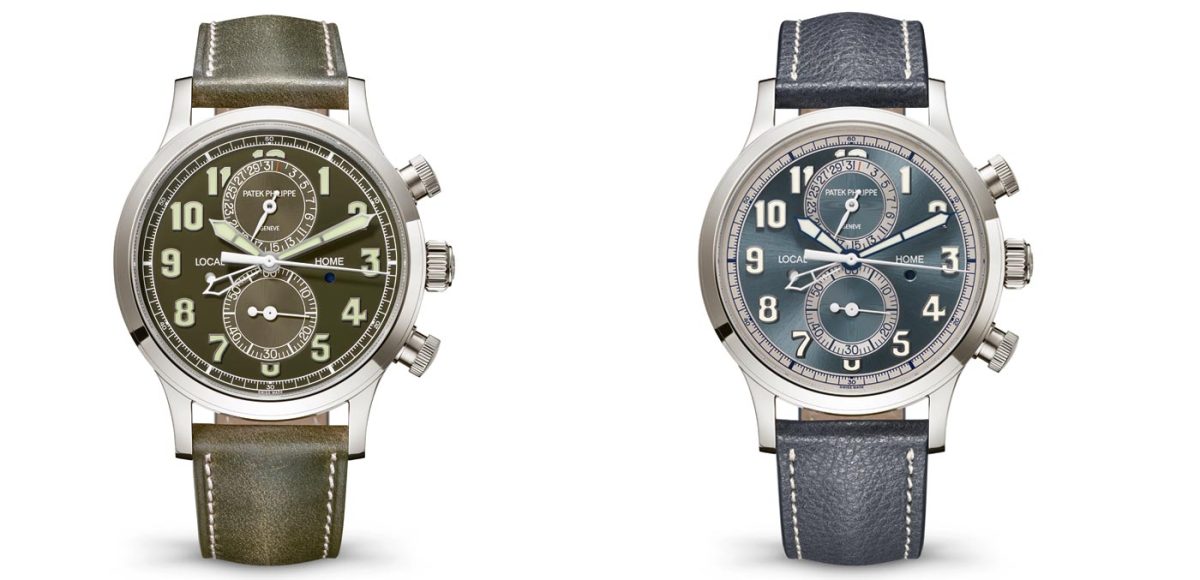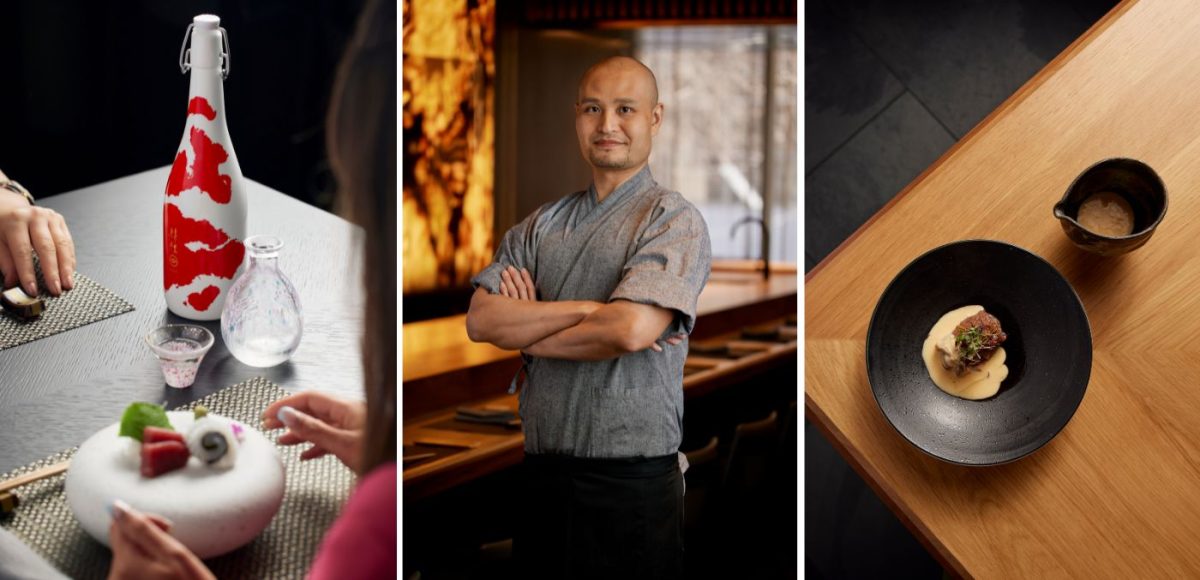Fast, affordable, environmentally friendly, scenic – the rise in popularity of travelling by rail is understandable. We take a look at what may well be the ultimate train trip Japan has to offer – a four-day winter holiday from Tokyo.
Japan’s rail network is arguably the best in the world, making travel around the country a breeze, and offering the chance to see a remarkable amount in a short space of time. From Tokyo, you only need four days to explore the Tokyo-Nikko-Aizu Route, utilising the Tobu Railway, Yagan Railway and Aizu Railway. Here’s how.
Tobu Railway Express Revaty
DAY 1 Tokyo to Aizukogen Ozeguchi Station
Morning
Tokyo is enormous – the largest metropolis in the world, in fact. But unlike many other big cities, the Japanese capital comes with plenty of places to enjoy a moment of calm, and culture. Think manicured gardens and spiritual temples, like Ueno Toshogu, a venerable Shinto shrine built in memory of Tokugawa Ieyasu (founder of the Tokugawa Shogunate), one of the country’s most revered warriors thanks to having unified Japan’s feudal domains.
Today, the complex is all about peace, rather than war, its shrine a dazzling gilded example of gongen-zukuri architecture from the Edo period. Wandering the grounds you’ll also spot karamon; the Sukibei Wall, which is decorated with carvings of creatures; grand Oishi Torii gate; and stone and copper lanterns, all adding to the atmosphere.
The Edo period is also when the tasty tradition of amezaiku is said to have begun. It’s quite an art to create this candy. Soft toffee is heated then moulded using bare hands and scissors before turning hard – within a matter of minutes. You’ll have to work fast when you attempt to make it at Ameshin, before taking away a haul to fuel your onward journey.
Ueno Toshogu Shrine
Afternoon
Keep your chef’s hat on, as you’re about to cook up a storm at Chagohan Tokyo. This culinary school shows you how to make all those Japanese goodies you’ve devoured. Perhaps steaming bowls of ramen and gyoza dumplings. Or perfect nigiri sushi. Or okonomiyaki, that loaded Japanese omelette drizzled with sauces. You’ll also gain insights into culture, whether the intricacies of a matcha tea ceremony or the art of sipping sake.
The establishment is in the heart of Asakusa, known for its atmospheric streets that nod to Tokyo of yesteryear. None more colourful than Nakamise, an approximately 250-metre-long avenue of stalls selling souvenirs and snacks outside Tokyo’s oldest temple, Sensoji.
It’s time to wave goodbye to Tokyo. Venture to Asakusa Station in Japan to catch the limited-express Revaty Aizu 129 train to Aizukogen Ozeguchi Station, about 175 kilometres north. Bonus: there’s free Wi-Fi and electrical outlets at every seat. We recommend gazing out the window, however…
DAY 2 Minamiaizu to Shimogo to Aizu-Wakamatsu
Morning
The Minamiaizu region of Fukushima is known for its seriously good powdery snow over the winter months. First stop today is the resort of Takatsue, its mountain topping out at 1,650 metres and replete with 15 diverse runs over five kilometres of trails. While it’s tempting to keep your ski (or snowboard) boots on all day, you’re in for a mid-morning treat: panoramic views of surrounding peaks while zipping about on a snowcat.
Takatsue Ski Resort
Afternoon
The charming Ouchijuku of Shimogo is about hour’s drive from Takatsue Ski Resort. It’s a good thing, too, as by this time you’ll have worked up quite the appetite. Tempting restaurants line the main street of Ouchijuku, but it is best known for its delicious soba. The local delicacy is negi soba, handmade soba noodles that are served with a whole leek – instead of chopsticks. The reason why it is eaten with negi is explained by the soba-making experts or by the store staff.
Back on the streets, it’s time to enjoy other regional specialties. Like tochimochi, a local food made with sticky rice and Japanese horse chestnut seeds. Or shingoro, where half-mashed uruchi rice is rolled into a ball, skewered, coated with 10-year miso paste and grilled over charcoal.
Walk off the indulgences while discovering Ouchijuku, an Edo-era former post town that forms part of Shimogo. The traditional townscape of Ouchijuku was once nearly lost, but in 1981 it was selected as an Important Preservation District for Groups for Traditional Buildings by the Japanese government. This led to a heightened awareness among residents for the preservation of the townscape, and as a result, it is one of the few historic townscapes remaining in Japan. Small wonder the town’s traditional buildings and thatched-roof homesteads are now officially protected.
Ouchijuku
Evening
Stroll down the main street to peaceful Takakura Shrine. After visiting the shrine, climb the stairs to the gazebo, the highlight of the Ouchijuku, for stellar views over the old town. Think of the steps as a way to work up an appetite for cuisine scheduled as today’s dinner at Shibukawa Donya in Aizuwakamatsu. Its maze of private rooms and eclectic artefacts decorate the historic Shibukawa Donya. The establishment made its name as a seafood wholesaler, and you can find specialties like salted herring and dried codfish on the menu. More extravagant is the kaiseki experience, a seasonal degustation that might include wagyu (known here as ‘phantom Aizu beef’, due to its rarity) and perfectly fried tempura.
DAY 3 Aizu-Wakamatsu to Nikko
Morning
Fukushima’s castle town, Aizu-Wakamatsu is a place postcards were made for. The distinctive red-and-white Tsurugajo Castle was rebuilt in 1965, with the exterior recreated in the style of the period and the interior turned into a museum. It stays true to its original architecture, inside and out. It’s one of the final strongholds of samurai that remained loyal to the shogunate, and today stands as a symbol of courage and faithfulness.
Learn more in the tower’s museum, where swords and armour of the castle’s successive lords are on display. Or head to the fifth floor where the viewing platform offers panoramic views to Mt Iimoriyama, your next destination.
The mountain’s beauty belies a somewhat sombre past, remembered in temples, shrines – and gravesites, 19 of them at the summit marking 19 teenage Byakkotai, White Tiger Corps samurai-in-the-making who committed suicide here during the 1868 civil war.
It’s a place for quiet contemplation. And snacking – grab treats from the stalls at the base of the mountain before your ascent: hike up the 183 steps to the summit for free, or pay 250 yen to ride the escalator up. Be sure to linger at Sazaedo Buddhist temple, crafted from wood in a distinctive shape similar to the shell of a horned turban.
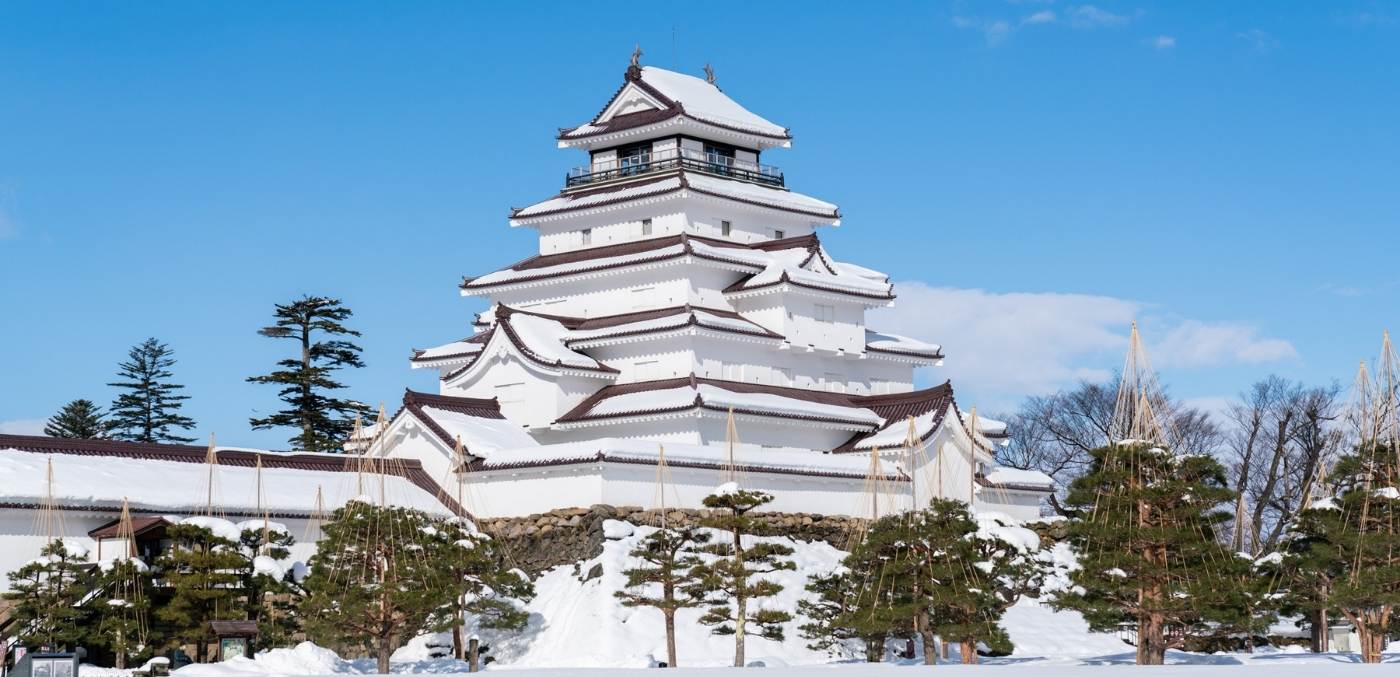
Afternoon
In need of refreshments? You’ve come to the right place. Historic Suehiro Sake Brewery has been fermenting Japan’s national rice drink since the mid-19th century. You can tour the site from May through October to glimpse behind-the-scenes action, while tastings are available year-round. Steel yourself – there are up to 10 varieties of sake to sample. The on-site café brews coffee using water normally reserved for making sake, and sake is also infused in cakes here.
Save room for lunch at Restaurant Kontsh, one of the city’s newest restaurants, but housed in a handsome 120-year-old building that nods to the arts – it was once a lacquerware store. Today it dishes up innovative vegan cuisine, with a Japanese twist.
Both the brewery and restaurant are in the vicinity of Nanokamachi-dori Street, a quaint shopping street with an olde-world atmosphere. The impressive collection of Japanese-style storehouses and wooden townhouses are fitted with boutiques selling lacquerware and momen (cotton made in the Aizu area).
When you’ve had your fix of retail therapy, it’s time for another Japan travel highlight: a ride south on the Ozatoro-Tembo sightseeing train. This journey is all about the scenery, and your ride pauses at lookouts along the way so passengers can take in the view and snap a photo or two.
While travelling through the tunnels, the trolley seats (first or last depending on the destination), are dark and are treated to ‘trolley theatre’: videos project onto the walls of the tunnel; another carriage has tatami mats and sunken tables. And then there are the stations – one has a cat as a stationmaster, another is an old-style Japanese building with a thatched roof.
Suehiro Sake Brewery
Evening
Alight in Nikko at Yunishigawa Onsen Station, the gateway to a small town in a remote valley. Your base for the night is Taira no Takafusa ryokan; arriving here is rather spectacular thanks to the inn’s huge illuminated gate and steam billowing from the bathing area. The outdoor rotenburo onsen baths are a dreamy place to bathe surrounded by snow, and there are also private baths that can be booked for a soak.
When your limbs are sufficiently subtle, enjoy dinner at the on-site restaurant, where each dining group has a irori (hearth) to cook river fish and yams.
Taira no Takafusa
DAY 4: Nikko to Tokyo
Morning
Elevate your spirits at Yunishigawa Mizunosato, a serene forest area enveloping mirror-like dams. There’s a suspension bridge to enable visitors to go hiking during the warmer months. But in winter it also makes for great views of the river and hills beyond. There are yet more onsen, as well as a free foot bath.
Worshippers knew what they were doing when they built Chuzenji Temple on the banks of its namesake lake, all backdropped by snow-capped mountains. You could easily spend hours here, finding the perfect photo and making offerings to Buddha. There is a sutra/picture drawing experience here, where you can trace the outline of the Utsushi-Hotoke statue of Buddha with 1,000 arms, and write down your wish to be presented to the deity.
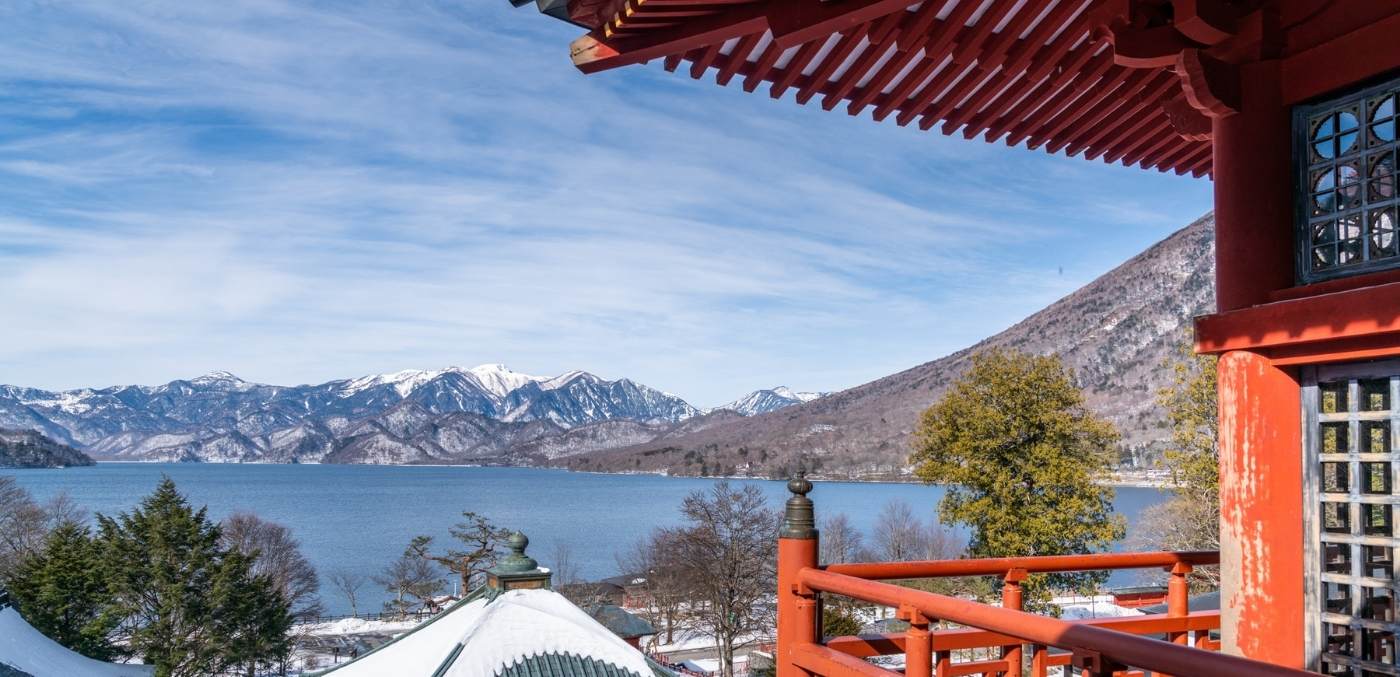
Even more impressive is the Nikko Toshogu Shrine complex, replete with commanding torii gates at the entrance and intricate wood carvings and gold leaf decorating the main building and Yomeimon Gate. There are more than a dozen buildings to explore.
Your final meal of the Japan train trip is a memorable one at Gyoshintei, which specialises in yuba. Nikko Yuba has a history of more than 1,000 years. Compared to the Kyoto yuba, which is made by boiling down soy milk and pulling up a single layer of the film, Nikko yuba is made in two layers and pulled up, making it thicker, which allows the aroma and flavour of the soybeans to be fully appreciated. Nikko’s fresh yuba is served on rice in a bowl with wasabi and soy sauce-based sauce. The meal is accompanied by crispy seasonal vegetable tempura, making it a sumptuous lunch.
From Tobu Nikko Station, jump aboard the Limited Express Kegon 44 train to Asakusa Station, Japan. Your journey back to Tokyo takes just under two hours. All you need to do is think about what’s for dinner…
Kanto District Transport Bureau, Taito-ward, Nikko city, Shimogo town, Aizu-Wakamatsu city, Tobu railway, Aizu Railway and Yagan Railway. Image credits: Don Kennedy
This Japan train trip article is a Signature Luxury Travel & Style digital exclusive. Be the first to see more exclusive online content by subscribing to the enewsletter.







